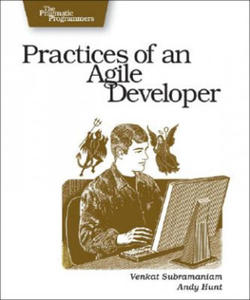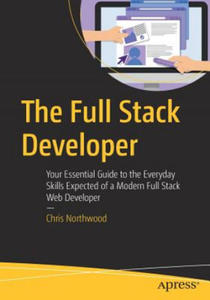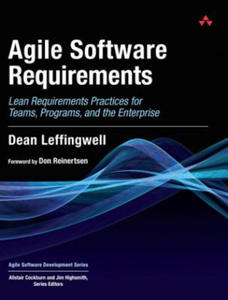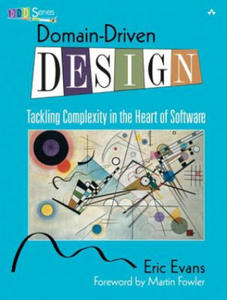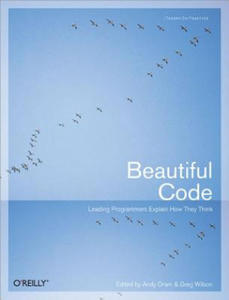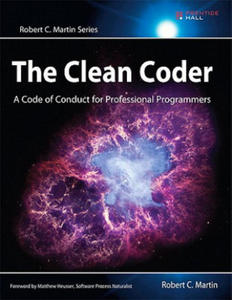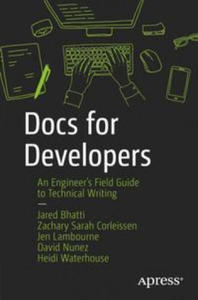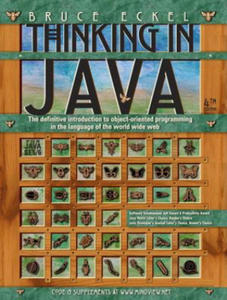libristo user developer cooperation in software development 5351828
- znaleziono 9 produktów w 2 sklepach
Practices of an Agile Developer - Working in the Real World The Pragmatic Programmers
Książki / Literatura obcojęzyczna
The practices that make a software project successful are usually missing in those projects that fail. These are the practices, habits, ideas and approaches that make that critical difference between success and failure. By following these better practices you can show yourself, your teammates and your managers real results, and begin to effect a broader change for your whole project. This book covers practices in five areas: Development Process While Coding Developer Attitude Project and Team Management Iterative and Incremental Learning These practices provide guidelines that will help you succeed in delivering and meeting the user's expectations, even if the domain is unfamiliar. You'll be able to keep normal project pressure from turning into disastrous stress while writing code, and see how to effectively coordinate mentors, team leads, and developers in harmony. The one wealth that grows as we give is knowledge. But this is also the one wealth that may be hardest to obtain. It takes effort, especially in a field as dynamic as software development. This book shows you why keeping up with change is important, and provides options to make it work for you.
Sklep: Libristo.pl
Full Stack Developer APress
Książki / Literatura obcojęzyczna
Understand the technical foundations, as well as the non-programming skills needed to be a successful full-stack web developer. This reveals the reasons why a truly successful full-stack developer does more than write code.You will learn the principles of the topics needed to help a developer new to agile or full-stack working-UX, project management, QA, product management, and more- all from the point of view of a developer. Covering these skills alongside the fundamentals and foundations of modern web development, rather than specifics of current technologies and frameworks (which can age quickly), all programming examples are given in the context of the web as it is in 2018, but care is taken for these only to be used to explain an underlying concept that will remain relevant as the web evolves.Although you need to feel comfortable working on code at the system, database, API, middleware or user interface level, depending on the task in hand, you also need to be able to deal with the big picture and the little details. The Full Stack Developer recognizes skills beyond the technical, and gives foundational knowledge of the wide set of skills needed in a modern software development team. What You'll LearnPlan your work including Agile vs Waterfall, tools, scrum, kanban and continuous deliveryTranslate UX into code: grids, component libraries and style guidesDesign systems and system architectures (microservices to monoliths)Review patterns for APIs (SOAP, AJAX, REST), defining API domains, patterns for REST APIs and more API goodnessStudy the various front-end design patterns you need to knowStore data, what to consider for security, deployment, in production and moreWho This Book Is ForNew graduates or junior developers who are transitioning to working as part of a larger team structure in a multi-disciplinary teams and developers previously focused on only front-end or back-end dev transitioning into full-stack.
Sklep: Libristo.pl
Agile Software Requirements Pearson Education
Książki / Literatura obcojęzyczna
"We need better approaches to understanding and managing software requirements, and Dean provides them in this book. He draws ideas from three very useful intellectual pools: classical management practices, Agile methods, and lean product development. By combining the strengths of these three approaches, he has produced something that works better than any one in isolation." -From the Foreword by Don Reinertsen, President of Reinertsen & Associates; author of Managing the Design Factory; and leading expert on rapid product development Effective requirements discovery and analysis is a critical best practice for serious application development. Until now, however, requirements and Agile methods have rarely coexisted peacefully. For many enterprises considering Agile approaches, the absence of effective and scalable Agile requirements processes has been a showstopper for Agile adoption. In Agile Software Requirements, Dean Leffingwell shows exactly how to create effective requirements in Agile environments.* Part I presents the "big picture" of Agile requirements in the enterprise, and describes an overall process model for Agile requirements at the project team, program, and portfolio levels* Part II describes a simple and lightweight, yet comprehensive model that Agile project teams can use to manage requirements* Part III shows how to develop Agile requirements for complex systems that require the cooperation of multiple teams* Part IV guides enterprises in developing Agile requirements for ever-larger "systems of systems," application suites, and product portfolios This book will help you leverage the benefits of Agile without sacrificing the value of effective requirements discovery and analysis. You'll find proven solutions you can apply right now-whether you're a software developer or tester, executive, project/program manager, architect, or team leader.
Sklep: Libristo.pl
Domain-Driven Design Pearson Education
Książki / Literatura obcojęzyczna
Eric Evans has written a fantastic book on how you can make the design of your software match your mental model of the problem domain you are addressing. His book is very compatible with XP. It is not about drawing pictures of a domain; it is about how you think of it, the language you use to talk about it, and how you organize your software to reflect your improving understanding of it. Eric thinks that learning about your problem domain is as likely to happen at the end of your project as at the beginning, and so refactoring is a big part of his technique."The book is a fun read. Eric has lots of interesting stories, and he has a way with words. I see this book as essential reading for software developers-it is a future classic." -Ralph Johnson, author of Design PatternsIf you don't think you are getting value from your investment in object-oriented programming, this book will tell you what you've forgotten to do."Eric Evans convincingly argues for the importance of domain modeling as the central focus of development and provides a solid framework and set of techniques for accomplishing it. This is timeless wisdom, and will hold up long after the methodologies du jour have gone out of fashion." -Dave Collins, author of Designing Object-Oriented User Interfaces"Eric weaves real-world experience modeling-and building-business applications into a practical, useful book. Written from the perspective of a trusted practitioner, Eric's descriptions of ubiquitous language, the benefits of sharing models with users, object life-cycle management, logical and physical application structuring, and the process and results of deep refactoring are major contributions to our field." -Luke Hohmann, author of Beyond Software Architecture"This book belongs on the shelf of every thoughtful software developer." -Kent Beck "What Eric has managed to capture is a part of the design process that experienced object designers have always used, but that we have been singularly unsuccessful as a group in conveying to the rest of the industry. We've given away bits and pieces of this knowledge...but we've never organized and systematized the principles of building domain logic. This book is important." -Kyle Brown, author of Enterprise Java(TM) Programming with IBM(R) WebSphere(R)The software development community widely acknowledges that domain modeling is central to software design. Through domain models, software developers are able to express rich functionality and translate it into a software implementation that truly serves the needs of its users. But despite its obvious importance, there are few practical resources that explain how to incorporate effective domain modeling into the software development process. Domain-Driven Design fills that need. This is not a book about specific technologies. It offers readers a systematic approach to domain-driven design, presenting an extensive set of design best practices, experience-based techniques, and fundamental principles that facilitate the development of software projects facing complex domains. Intertwining design and development practice, this book incorporates numerous examples based on actual projects to illustrate the application of domain-driven design to real-world software development. Readers learn how to use a domain model to make a complex development effort more focused and dynamic. A core of best practices and standard patterns provides a common language for the development team. A shift in emphasis-refactoring not just the code but the model underlying the code-in combination with the frequent iterations of Agile development leads to deeper insight into domains and enhanced communication between domain expert and programmer. Domain-Driven Design then builds on this foundation, and addresses modeling and design for complex systems and larger organizations.Specific topics covered include: * Getting all team members to speak the same language* Connecting model and implementation more deeply* Sharpening key distinctions in a model* Managing the lifecycle of a domain object* Writing domain code that is safe to combine in elaborate ways* Making complex code obvious and predictable* Formulating a domain vision statement* Distilling the core of a complex domain* Digging out implicit concepts needed in the model* Applying analysis patterns* Relating design patterns to the model* Maintaining model integrity in a large system* Dealing with coexisting models on the same project* Organizing systems with large-scale structures* Recognizing and responding to modeling breakthroughsWith this book in hand, object-oriented developers, system analysts, and designers will have the guidance they need to organize and focus their work, create rich and useful domain models, and leverage those models into quality, long-lasting software implementations.
Sklep: Libristo.pl
Beautiful Code O'Reilly Media
Książki / Literatura obcojęzyczna
How do the experts solve difficult problems in software development? In this unique and insightful book, leading computer scientists offer case studies that reveal how they found unusual, carefully designed solutions to high-profile projects. You will be able to look over the shoulder of major coding and design experts to see problems through their eyes. This is not simply another design patterns book, or another software engineering treatise on the right and wrong way to do things. The authors think aloud as they work through their project's architecture, the tradeoffs made in its construction, and when it was important to break rules. "Beautiful Code" is an opportunity for master coders to tell their story. All author royalties will be donated to Amnesty International. The book includes the following contributions: "Beautiful Brevity: Rob Pike's Regular Expression Matcher" by Brian Kernighan, Department of Computer Science, Princeton University; "Subversion's Delta Editor: Interface as Ontology" by Karl Fogel, editor of "QuestionCopyright.org", Co-founder of Cyclic Software, the first company offering commercial CVS support; "The Most Beautiful Code I Never Wrote" by Jon Bentley, Avaya Labs Research; "Finding Things" by Tim Bray, Director of Web Technologies at Sun Microsystems, co-inventor of XML 1.0; "Correct, Beautiful, Fast (In That Order): Lessons From Designing XML Validators" by Elliotte Rusty Harold, Computer Science Department at Polytechnic University, author of "Java I/O, Java Network Programming", and "XML in a Nutshell" (O'Reilly); and, "The Framework for Integrated Test: Beauty through Fragility" by Michael Feathers, consultant at Object Mentor, author of "Working Effectively with Legacy Code" (Prentice Hall). It also includes: "Beautiful Tests" by Alberto Savoia, Chief Technology Officer, Agitar Software Inc; "On-the-Fly Code Generation for Image Processing" by Charles Petzold, author "Programming Windows and Code: The Hidden Language of Computer Hardware and Software" (both Microsoft Press); "Top Down Operator Precedence" by Douglas Crockford, architect at Yahoo!Inc, Founder and CTO of State Software, where he discovered JSON; "Accelerating Population Count" by Henry Warren, currently works on the Blue Gene petaflop computer project Worked for IBM for 41 years; "Secure Communication: The Technology of Freedom" by Ashish Gulhati, Chief Developer of Neomailbox, an Internet privacy service Developer of Cryptonite, an OpenPGP-compatible secure webmail system; and, "Growing Beautiful Code in BioPerl" by Lincoln Stein, investigator at Cold Spring Harbor Laboratory - develops databases and user interfaces for the Human Genome Project using the Apache server and its module API.It also includes: "The Design of the Gene Sorter" by Jim Kent, Genome Bioinformatics Group, University of California Santa Cruz; "How Elegant Code Evolves With Hardware: The Case Of Gaussian Elimination" by Jack Dongarra, University Distinguished Professor of Computer Science in the Computer Science Department at the University of Tennessee, also distinguished Research Staff member in the Computer Science and Mathematics Division at Oak Ridge National Laboratory (ORNL) and Piotr Luszczek, Research Professor at the University of Tennessee; "Beautiful Numerics" by Adam Kolawa, co-founder and CEO of Parasoft; and, "The Linux Kernel Driver Model" by Greg Kroah-Hartman, SuSE Labs/Novell, Linux kernel maintainer for driver subsystems, author of "Linux Kernel in a Nutshell", co-author of "Linux Device Drivers, 3rd Edition" (O'Reilly).It also includes: "Another Level of Indirection" by Diomidis Spinellis, Associate Professor at the Department of Management Science and Technology at the Athens University of Economics and Business, Greece; "An Examination of Python's Dictionary Implementation" by Andrew Kuchling, longtime member of the Python development community, and a director of the Python Software Foundation; "Multi-Dimensional Iterators in NumPy" by Travis Oliphant, Assistant Professor in the Electrical and Computer Engineering Department at Brigham Young University; and, "A Highly Reliable Enterprise System for NASAs Mars Rover Mission" by Ronald Mak, co-founder and CTO of Willard & Lowe Systems, Inc, formerly a senior scientist at the Research Institute for Advanced Computer Science on contract to NASA Ames.It also includes: "ERP5: Designing for Maximum Adaptability" by Rogerio de Carvalho, researcher at the Federal Center for Technological Education of Campos (CEFET Campos), Brazil and Rafael Monnerat, IT Analyst at CEFET Campos, and an offshore consultant for Nexedi SARL; "A Spoonful of Sewage" by Bryan Cantrill, Distinguished Engineer at Sun Microsystems, where he has spent most of his career working on the Solaris kernel; "Distributed Programming with MapReduce" by Jeff Dean and Sanjay Ghemawat, Google Fellows in Google's Systems Infrastructure Group; "Beautiful Concurrency" by Simon Peyton Jones, Microsoft Research, key contributor to the design of the functional language Haskell, and lead designer of the Glasgow Haskell Compiler (GHC); and, "Syntactic Abstraction: The syntax-case expander" by Kent Dybvig, Developer of Chez Scheme and author of the Scheme Programming Language. It also includes: "Object-Oriented Patterns and a Framework for Networked Software" by William Otte, a Ph.D. student in the Department of Electrical Engineering and Computer Science (EECS) at Vanderbilt University and Doug Schmidt, Full Professor in the Electrical Engineering and Computer Science (EECS) Department, Associate Chair of the Computer Science and Engineering program, and a Senior Research Scientist at the Institute for Software Integrated Systems (ISIS) at Vanderbilt University; "Integrating Business Partners the RESTful Way" by Andrew Patzer, Director of the Bioinformatics Program at the Medical College of Wisconsin; and, "Beautiful Debugging" by Andreas Zeller, computer science professor at Saarland University, author of "Why Programs Fail: A Guide to Systematic Debugging" (Morgan Kaufman).It also includes: "Code That's Like an Essay" by Yukihiro Matsumoto, inventor of the Ruby language; "Designing Interfaces Under Extreme Constraints: the Stephen Hawking editor" by Arun Mehta, professor and chairman of the Computer Engineering department of JMIT, Radaur, Haryana, India; "Emacspeak: The Complete Audio Desktop" by TV Raman, Research Scientist at Google where he focuses on web applications; "Code in Motion" by Christopher Seiwald, founder and CTO of Perforce Software and Laura Wingerd, vice president of product technology at Perforce Software, author of "Practical Perforce" (O'Reilly); and, "Writing Programs for 'The Book'" by Brian Hayes who writes the Computing Science column in American Scientist magazine, author of "Infrastructure: A Field Guide to the Industrial Landscape"(W.W. Norton).
Sklep: Libristo.pl
MICRO FRONTENDS IN ACTION MICHAEL GEERS NOWA WYDAWCA
Podręczniki, artykuły szkolne > Podręczniki do szkół podst. i średnich
Micro Frontends in Action By adopting the micro frontends approach and designing your web apps as systems of features, you can deliver faster feature development, easier upgrades, and pick and choose the technology you use in your stack. Micro Frontends in Action is your guide to simplifying unwieldy frontends by composing them from small, well-defined units. You
Sklep: ksiazkitanie.pl
The Clean Coder Pearson Education
Książki / Literatura obcojęzyczna
The Much-Anticipated Follow-Up to "Uncle Bob's" Highly Praised Clean CodeProgrammers who endure and succeed amidst swirling uncertainty and nonstop pressure share a common attribute: They care deeply about the practice of creating software. They treat it as a craft. They are professionals.In The Clean Coder: A Code of Conduct for Professional Programmers , legendary software expert Robert C. Martin introduces the disciplines, techniques, tools, and practices of true software craftsmanship.This book is packed with practical advice-about everything from estimating and coding to refactoring and testing. It covers much more than technique: It is about attitude. Martin shows how to approach software development with honor, self-respect, and pride; work well and work clean; communicate and estimate faithfully; face difficult decisions with clarity and honesty; and understand that deep knowledge comes with a responsibility to act.Readers will learn:What it means to behave as a true software craftsmanHow to deal with conflict, tight schedules, and unreasonable managersHow to get into the flow of coding, and get past writer's blockHow to handle unrelenting pressure and avoid burnoutHow to combine enduring attitudes with new development paradigmsHow to manage your time, and avoid blind alleys, marshes, bogs, and swampsHow to foster environments where programmers and teams can thriveWhen to say "No"-and how to say itWhen to say "Yes"-and what yes really meansGreat software is something to marvel at: powerful, elegant, functional, a pleasure to work with as both a developer and as a user. Great software isn't written by machines. It is written by professionals with an unshakable commitment to craftsmanship. The Clean Coder will help you become one of them-and earn the pride and fulfillment that they alone possess.
Sklep: Libristo.pl
Docs for Developers APress
Książki / Literatura obcojęzyczna
Learn to integrate programming with good documentation. This book teaches you the craft of documentation for each step in the software development lifecycle, from understanding your users' needs to publishing, measuring, and maintaining useful developer documentation. Well-documented projects save time for both developers on the project and users of the software. Projects without adequate documentation suffer from poor developer productivity, project scalability, user adoption, and accessibility. In short: bad documentation kills projects. Docs for Developers demystifies the process of creating great developer documentation, following a team of software developers as they work to launch a new product. At each step along the way, you learn through examples, templates, and principles how to create, measure, and maintain documentation-tools you can adapt to the needs of your own organization. What You'll Learn
Sklep: Libristo.pl
Thinking in Java Pearson Education
Książki / Literatura obcojęzyczna
"Thinking in Java should be read cover to cover by every Java programmer, then kept close at hand for frequent reference. The exercises are challenging, and the chapter on Collections is superb! Not only did this book help me to pass the Sun Certified Java Programmer exam; it's also the first book I turn to whenever I have a Java question." -Jim Pleger, Loudoun County (Virginia) Government"Much better than any other Java book I've seen. Make that 'by an order of magnitude'...Very complete, with excellent right-to-the-point examples and intelligent, not dumbed-down, explanations...In contrast to many other Java books I found it to be unusually mature, consistent, intellectually honest, well-written, and precise. IMHO, an ideal book for studying Java." -Anatoly Vorobey, Technion University, Haifa, Israel"Absolutely one of the best programming tutorials I've seen for any language." -Joakim Ziegler, FIX sysop"Thank you again for your awesome book. I was really floundering (being a non-C programmer), but your book has brought me up to speed as fast as I could read it.It's really cool to be able to understand the underlying principles and concepts from the start, rather than having to try to build that conceptual model through trial and error. Hopefully I will be able to attend your seminar in the not-too-distant future." -Randall R. Hawley, automation technician, Eli Lilly & Co."This is one of the best books I've read about a programming language...The best book ever written on Java." -Ravindra Pai, Oracle Corporation, SUNOS product line"Bruce, your book is wonderful! Your explanations are clear and direct. Through your fantastic book I have gained a tremendous amount of Java knowledge. The exercises are also fantastic and do an excellent job reinforcing the ideas explained throughout the chapters. I look forward to reading more books written by you. Thank you for the tremendous service that you are providing by writing such great books. My code will be much better after reading Thinking in Java. I thank you and I'm sure any programmers who will have to maintain my code are also grateful to you." -Yvonne Watkins, Java artisan, Discover Technologies, Inc."Other books cover the what of Java (describing the syntax and the libraries) or the how of Java (practical programming examples). Thinking in Java is the only book I know that explains the why of Java: Why it was designed the way it was, why it works the way it does, why it sometimes doesn't work, why it's better than C++, why it's not. Although it also does a good job of teaching the what and how of the language, Thinking in Java is definitely the thinking person's choice in a Java book." -Robert S. StephensonAwards for Thinking in Java2003 Software Development Magazine Jolt Award for Best Book 2003 Java Developer's Journal Reader's Choice Award for Best Book 2001 JavaWorld Editor's Choice Award for Best Book 2000 JavaWorld Reader's Choice Award for Best Book 1999 Software Development Magazine Productivity Award 1998 Java Developer's Journal Editor's Choice Award for Best Book Thinking in Java has earned raves from programmers worldwide for its extraordinary clarity, careful organization, and small, direct programming examples. From the fundamentals of Java syntax to its most advanced features, Thinking in Java is designed to teach, one simple step at a time.* The classic object-oriented introduction for beginners and experts alike, fully updated for Java SE5/6 with many new examples and chapters! * Test framework shows program output. * Design patterns are shown with multiple examples throughout: Adapter, Bridge, Chain of Responsibility, Command, Decorator, Facade, Factory Method, Flyweight, Iterator, Data Transfer Object, Null Object, Proxy, Singleton, State, Strategy, Template Method, and Visitor. * Introduction to XML for data transfer; SWT, Flash for user interfaces. * Completely rewritten concurrency chapter gives you a solid grasp of threading fundamentals. *500+ working Java programs in 700+ compiling files, rewritten for this edition and Java SE5/6. * Companion web site includes all source code, annotated solution guide, weblog, and multimedia seminars. * Thorough coverage of fundamentals; demonstrates advanced topics. * Explains sound object-oriented principles. *Hands-On Java Seminar CD available online, with full multimedia seminar by Bruce Eckel. * Live seminars, consulting, and reviews available. See www.MindView.net Download seven free sample chapters from Thinking in Java, Fourth Edition. Visit http://mindview.net/Books/TIJ4.
Sklep: Libristo.pl
Sklepy zlokalizowane w miastach: Warszawa, Kraków, Łódź, Wrocław, Poznań, Gdańsk, Szczecin, Bydgoszcz, Lublin, Katowice
Szukaj w sklepach lub całym serwisie
1. Sklepy z libristo pl user developer cooperation in software development 5351828
2. Szukaj na wszystkich stronach serwisu
t1=0.026, t2=0, t3=0, t4=0, t=0.026

